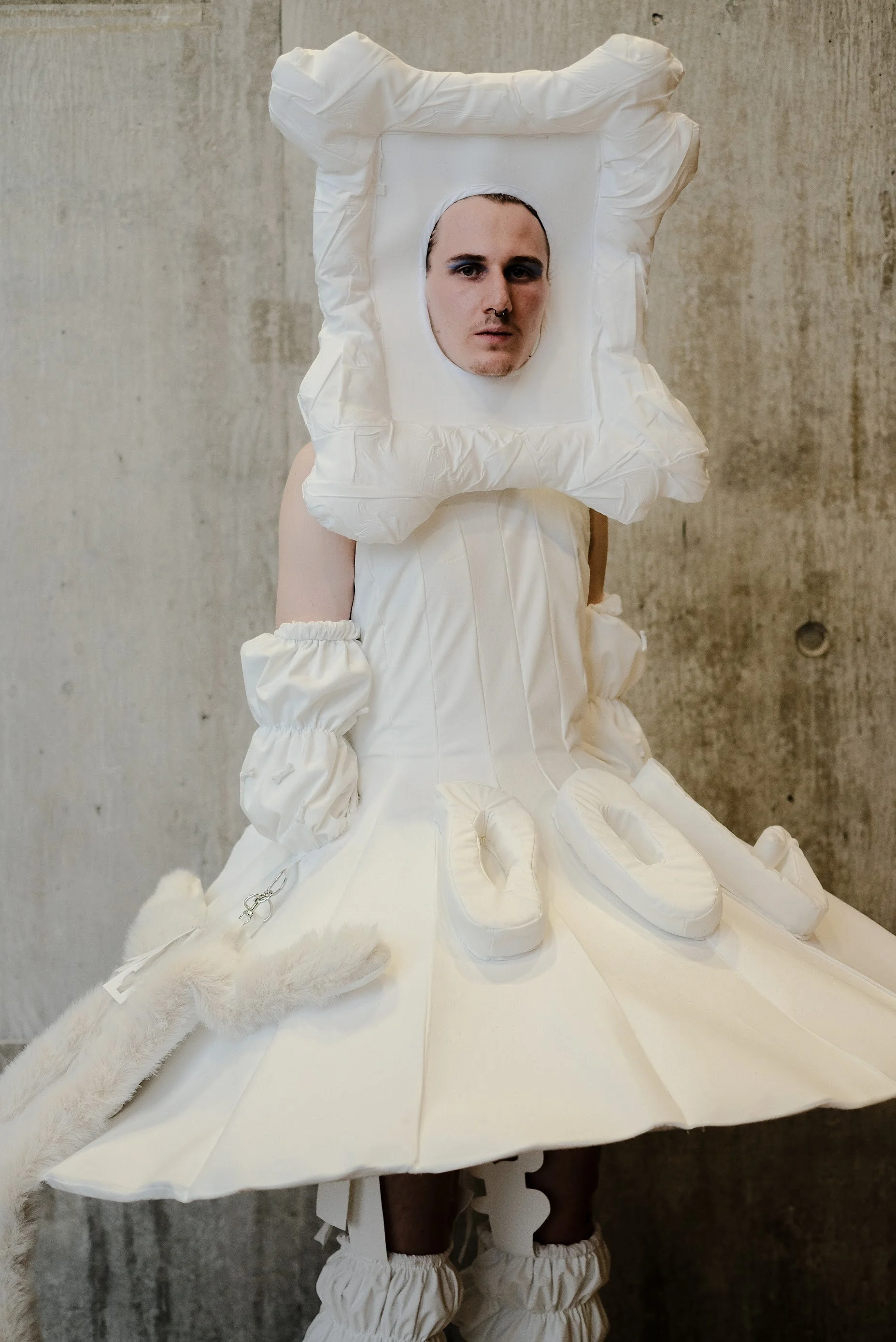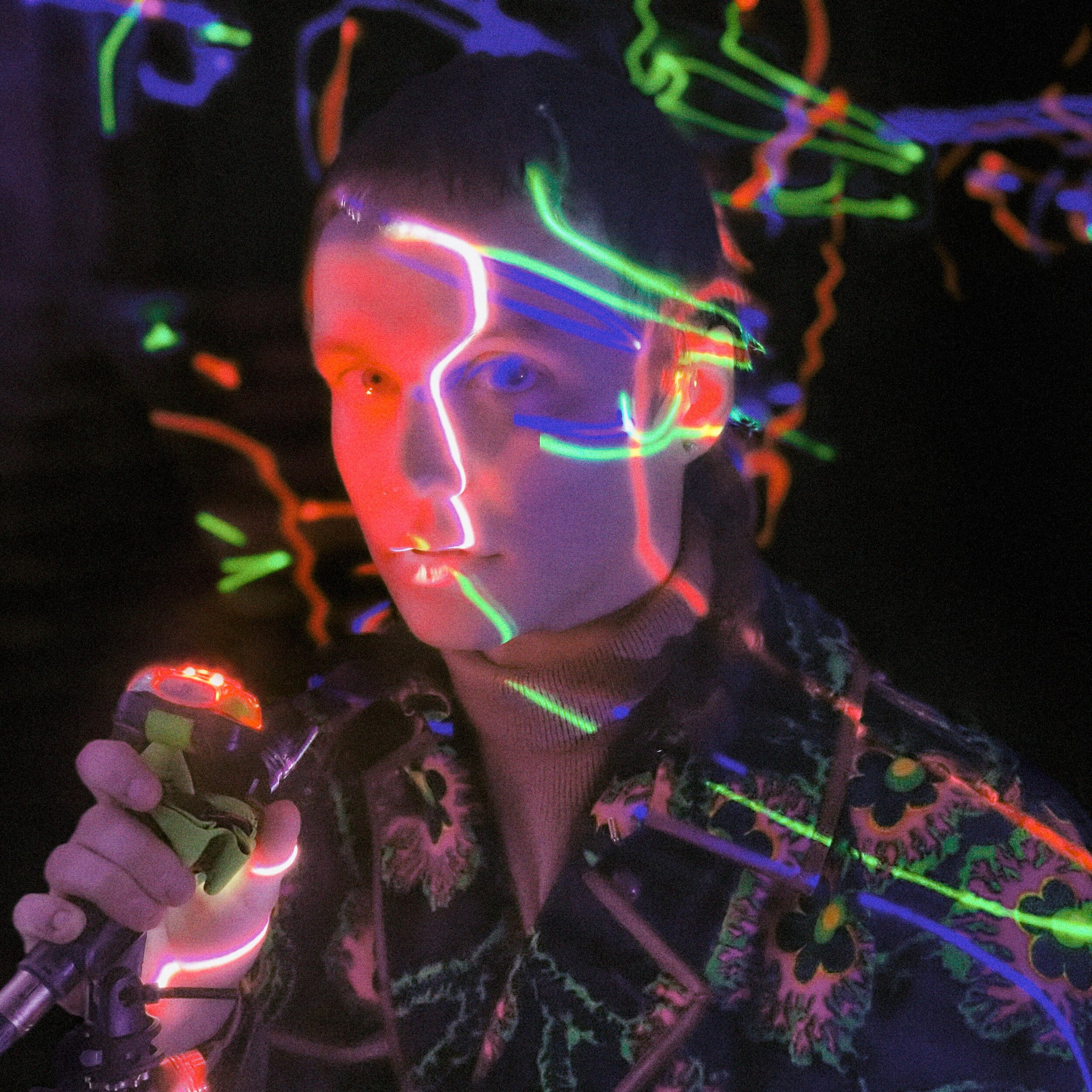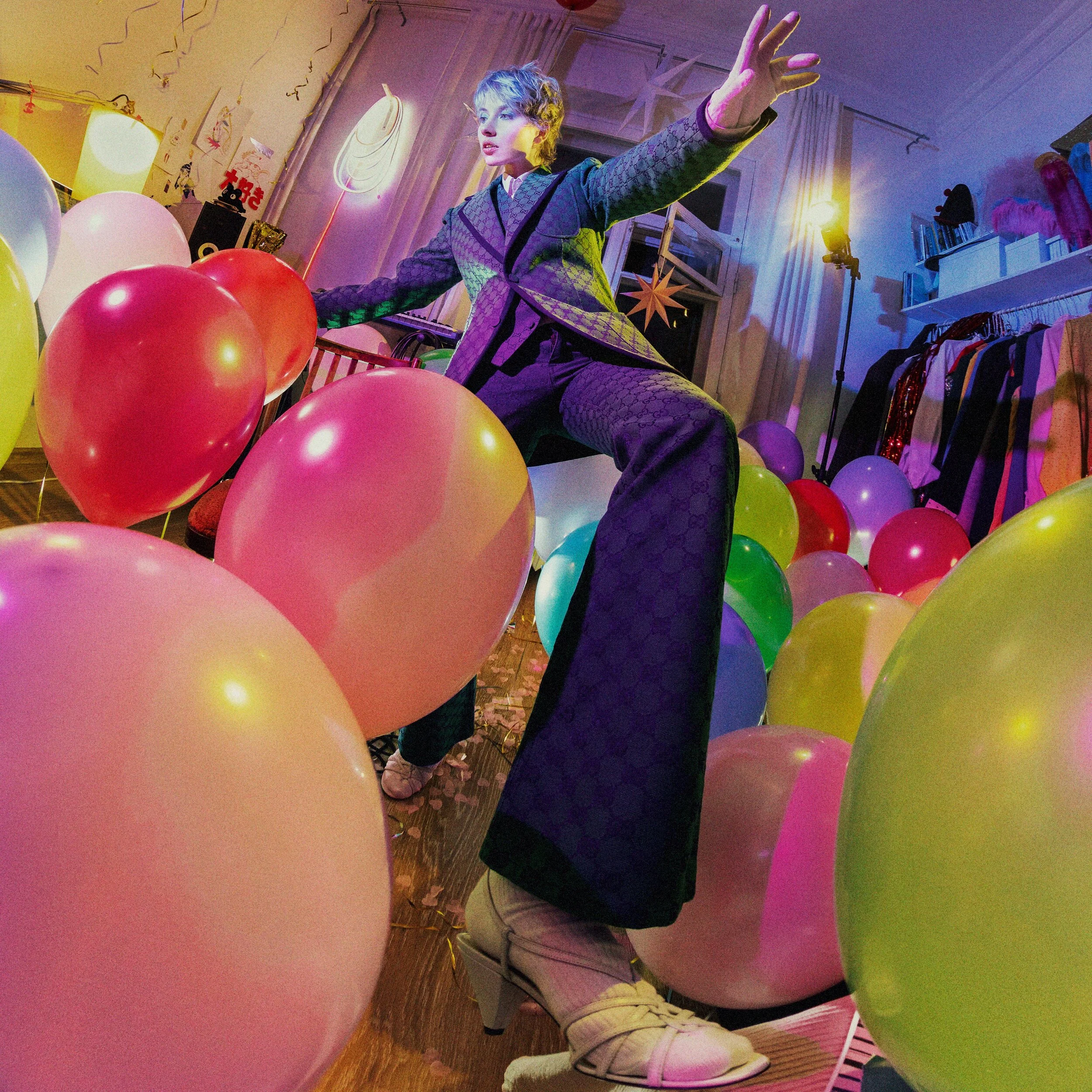Central Saint Martins’ White Show is back.
140 first-year BA Fashion students, a piece of white fabric, and an innate desire to rewrite the rules by which the industry is playing: that’s everything it takes to turn a runway into a conversation on the state of the fashion world today. Or at least, that’s my first impression of what happened last night at Granary Square: after two virtual editions, Central Saint Martins’ White Show finally managed to stage its live comeback.
“The project is like an institution in itself,” explains Visiting Lecturer Jeii Hong, who recalls taking part in it as a student over a decade ago. “It’s a celebration that sees all the first years from the different pathways, including design and communication students, coming together. It’s the first glimpse at the new talent that arrives at Central Saint Martins every year, so it’s actually a very special moment.”
Titled The Light Show, the latest edition of the 25-year-long CSM’s tradition set itself apart from the previous ones thanks to the use of mesmerising colourful projections. Situated at the intersection of real and virtual experience, the showcase comprised three segments: a pre-show physical exhibition, the catwalk, and a virtual rendition of the two.
Having, at its core, the themes of ‘perception’ and ‘dissection’, the event stimulated dialogues around what a fashion show can be, also proving how breaking down the process can help us reconstruct the garments’ narrative. A parade of exaggerated volumes, contrasting textures, and unspoiled creativity, this year’s White Show spotlighted — quite literally — the students’ eagerness to engage with fashion as a means of both exploring and finding their place in the contemporary socio-cultural scenario.
“There are stories that still need to be told, and many of those stories can be told on a runway,” says menswear fashion designer Timisola Shasanya. “A lot of people think that fashion is just about the clothes, but there’s much more to it.” To create her White Show garment, she looked at modern-day slavery and child labour in Nigeria, where she was born.
“When children are brought from the village to the suburbs to work in the city, they are usually placed in homes that are physically, mentally, and emotionally abusive,” explains Timisola. “I really wanted my piece to show that. I got a lot of influence from household materials that the maids use to tidy up and sweep — for example, African brooms — and I juxtaposed that with the fact that the guardians are supposed to look after them, or beat them, with those same brooms. I chose that as the focal point of my garment and hone it in this sculptural piece that captures the trauma of working in a home as a child, as opposed to a second, more tailored look, which shows an older housemaid reflecting back on it.”
Fellow CSM student Marshall McGlone shares Timisola’s commitment to voicing his story through fashion. “As a biracial person, I've had to battle my whiteness in order to identify as Black,” explains Marshall. “Being biracial, you're never really seen as Black but you’re not considered as white. I wanted to create something that depicted me trying to take up space within fashion using my Blackness. With that in mind, I chose to treat the fabric with black paint, wax, and acrylic paint that would eventually chip off and leave little breadcrumbs around the university, which is a white space in fashion. This piece shows how I’m leaving my mark within fashion by shedding my whiteness.”
More than anything, the Light Show called once again for radical change in the way fashion is conceived by questioning who gets to be part of it, its purpose, and the consequences that follow — whether of social or environmental nature.
“Fashion for me is about narrating and changing storylines,” says Zainab Mansary, a first-year student in Fashion Print. “My piece is called Black Juliet and stems from the lack of representation I experienced while growing up as a Black woman. I am still the only Black person in my class, and I can’t name more than 10 designers that are a minority and have done well after graduating from CSM. Studying here allows me to create the opportunity for someone else who feels like they're not good enough.”
For some, the only way to preserve the future of fashion, its relevance, and its influence on culture would be ensuring the shift towards “actually sustainable fabrics.” An urgent issue at stake that can’t be postponed any further.
“I really hope that the textiles that will be used in the coming years will be thoroughly sustainable,” says Dieter Vlasich, another one of the students who took part in yesterday’s fashion showcase. “When I was researching the fabric that was given to us this year, I found out it was all recyclable polyester, rather than recycled polyester. All fabrics made of polyester are not biodegradable at all and, each time they’re washed, they release microplastics into the ocean. That’s why I decided not to use any of those fabrics.”
Among the themes that permeated the looks of this edition’s line-up stood out the visual representation of trauma. In these garments, fashion served as a medium through which designers were able to represent, experience, and reflect on past and present traumas from an outsider’s perspective.
“My piece is all about how experiencing trauma feels,” explains another designer, whose name was lost to the madness that took over Granary Building ahead of the runway. “It’s like carrying a lot of weight on your shoulders. Everyday life feels like hiking a mountain with a lot of baggage on your back, which can be exhausting, of course. Still, this should never stop you or hold you back. You should still climb that mountain.”
Staying true to the title of the event, “The Light Show”, many of the students also opted to create garments that could bring some positivity — or at least, a couple of smiles — back into the lives of the attendees after nearly two years since the outbreak of COVID-19.
“This garment was inspired by the idea of dogs being our secret gods,” confesses Linus Stueben, while posing for us in his sculptural dress. “When it comes to fashion, people tend to come up with very dramatic stuff and take themselves quite seriously. Instead, I wanted people to have fun while looking at me and what I came up with. I think there should be a place for us in fashion as well, a place where we can make people happy.”
But Linus wasn’t the only one that strived for some ‘lightness’ last night. “I think the name of the show is really fitting for the time that we're in,” comments womenswear designer Matthew David Andrews. “Taking part in it really feels like finally reaching the light at the end of the tunnel. Hopefully, this can inspire people and give them a bit of joy as we go into Christmas. At least, that's what I want people to take from my piece: I want them to feel light, I want them to feel airy.”
From folklore tales and diasporas to personal experiences, inspiration literally came from everywhere, gracing the 2021 White Show with a kaleidoscopic look at a new generation of fashion designers.
If there’s anything I’ve learned from this experience, it is that fashion can no longer be reduced to a mere matter of clothing. Quite the contrary, it appears to have taken on the form of a bridge that connects the past, present, and future of who, in constant interaction with its many mediums, gets to define their identity. A bridge that doesn’t only facilitate individual introspection, but also creates a space for other people’s stories to be told and listened to. A space for mutual understanding. Fashion isn’t afraid to unveil what’s underneath the surface of things — be it a trauma or the silent, though very much present, climate emergency. Instead, it tosses about to reveal its true face; a face that was shown to me yesterday through the words and creations of those who contribute to the shaping of its future.
“It's been incredible being able to do the White Show again after two years,” says Course Leader Sarah Gresty looking back on the event. “The students have been incredible. The outcome has been amazing. Everyone feels invigorated. It's been a treat, and we can’t wait to do it all over again.”














